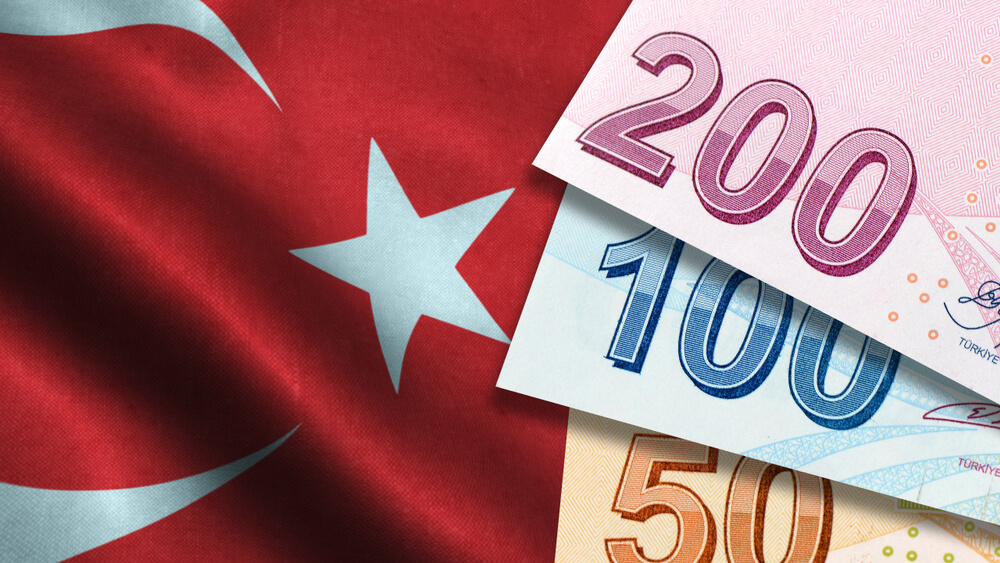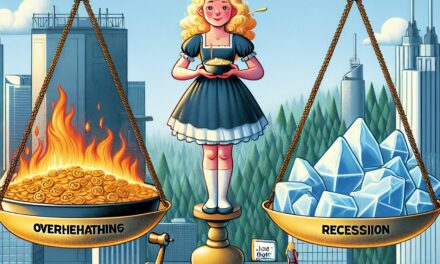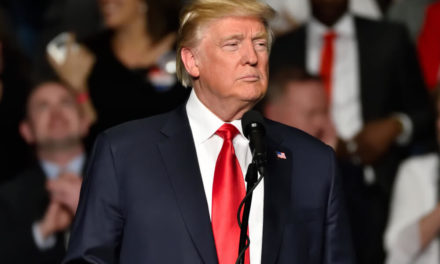When Turkish President Recep Tayyip Erdogan took control of Turkey’s central bank the reaction was predictable. Erdogan is no scion of libertarian thought or anything, so it was marketed to us as yet another move by an out-of-control authoritarian.
He did this to gain control over the situation with the Turkish lira, which underwent a major crisis last year. On Thursday, Erdogan again cut interest rates 3.5% to 16.50%. This is down from a high of 30% when he took over.
Cutting rates like he has during this part of the cycle is an explicit no-no according to conventional wisdom on such matters. The IMF always recommends a massive increase in interest rates to “wring inflation out of the economy” as the country approaches a balance of payments cliff.
Raising rates, cutting government spending and raising taxes are the prerequisites for getting any assistance from the IMF, i.e. a bailout.
That prescription, as dozens of countries over the past 70-plus years can attest, is a medicine that is, more often than not, worse than the disease. It keeps the current administration in power by calming things down, but also kicks the can down the road to a bigger problem in the future, c.f. Argentina.
A country with a balance of payments problem like Turkey can be allowed to have that continue for years as long as its policies are in accord with U.S. objectives in the world. Erdogan fell out of favor with the U.S. in late 2015, when he began shifting his policy away from regime change in Syria.
Turkey’s problems are Erdogan’s doing. He allowed unfettered growth through cheap U.S. dollar debt in the private sector during the ZIRP years.
So when the crisis hit, Turkey was staring at more than $233 billion in dollar-denominated corporate debt, much of it held by yield-starved European banks, interestingly enough.
This is just one of the myriad horrific effects of the current ZIRP/NIRP orthodoxy held by the dominant minds in central banking.
Erdogan, from the beginning of the crisis, said categorically that he would not do a deal with the IMF. The stronger his rhetoric, the more pressure the lira came under.
The Bank of Turkey held interest rates at that punitive level for months. Until Erdogan sacked its head and put it under his direct control, a consequence of the broad powers he acquired recently.
Now that you have the background, let’s get down to brass tacks.
On the same day that ECB President Mario Draghi re-opened his decade-old failed policy of negative interest rates (NIRP) and quantitative easing, Erdogan was lowering rates in Turkey, supposedly still in crisis with inflation running at 15%.
The initial reaction to Erdogan’s move was for the lira to strengthen, not weaken. But lower rates equals easy money and easy money should lower the exchange rate. Right?
Not so if the rate is way too high and the market is starved of that currency.
We saw the same thing occur when the Bank of Russia in 2017 finally lowered rates below 10%, again in opposition to IMF inflation-targeting dogma, and the Ruble strengthened. More than two years from a currency crisis and the Russian central bank was still trying to hold back the recovery, which had already begun.
Today Russia is still struggling with low growth metrics because the cost of capital in Rubles is too high thanks to an overly conservative central bank. The yield curve is still a mess today.
And the parallel between Russia and Turkey is profound.
Putin couldn’t or didn’t sack his chief central banker, Elvira Nabullina, but he did prominently meet with her at key points in time over the past couple of years. Both times saw her finally relent and begin lowering rates: from 10% to 7.25% in 2017-18, and now recently from 7.75% to 7.25%.
She needs to be at around 6%.
What I’m saying here is that IMF interest rate dogma is not designed to encourage growth and help the country recover, but to save the current regime, protect the lenders and leave the country on a kind of financial residual poison with lowered revenue, stifled growth and, ultimately, unpayable debt.
This way they can be made to do the bidding of foreign powers, or the loan program they are under can be canceled.
Not accepting the bailout, working through the debt and managing the domestic currency arbitrage is the way through the problem. And this is what Erdogan is doing.
Here’s the gig in Turkey: Inflation is moderating quickly and the country’s economy is still a mess.
However, there is no reason beyond the initial shock and awe to keep interest rates at punitive levels other than to force the government to accept the IMF’s “help” as the crisis doesn’t abate.
And if Erdogan had not taken over the central bank, they would still be starving the economy of money. The Turkish economy would preferentially use dollars in trade while savers reap huge, unearned rewards in lira, which will be incipient inflation once rates fall and those lira get spent or converted — again, back into dollars.
And the cycle restarts.
Once the crisis is over and the worst of the capital outflow arrested, then lowering rates quickly is the smart play. It shows confidence in the economy, not fear. Fear is what drives interest rates up when inflation is high. Confidence drives them lower.
Turkey got a lot of help on this front from Russia, China and Qatar to help with restructuring the debt.
Russia set the blueprint for this in 2015, along with China’s help, and I’m sure Putin’s people have been directly advising Erdogan on what to do.
The blueprint is simple but it’s also hard. Allow the currency to fall. Don’t accept the IMF’s “help.” Raise rates initially to stabilize the situation while working to alleviate the demand for dollars domestically, reissue dollar debt as local debt. Cut taxes and encourage real growth by cutting rates aggressively once the currency peaks, and the vultures trading it move on to the next target.
What dollars are earned go to debt repayment while the domestic currency demand rises. Keep cutting rates as exports rise and tourism increases. It will be a bitter pill to swallow but one that will insulate the country from future harm because dollars will have been the thing “wrung out of the economy.”
The previous debt-fueled boom has to be worked off in the bust. There’s no way around this. But there is no reason why that should take 10 or 20 years.
Erdogan is no economic genius, nor is he a “good guy.” But as a politician, he understands confidence better than ivory tower intellectuals who have never “held a proper job,” as Nigel Farage puts it.
Edrogan is also no fool either — he knows a leader must project strength and competence to loosen people’s wallets and get the economy moving. He’s actually doing that with how he’s handling Turkey’s finances.
Turkey today is where Russia was in late 2015, a year out from a full-blown currency crisis. Their recovery could be quicker if Erdogan continues cutting rates with each new set of inflation numbers. Nabullina, by contrast, didn’t begin lowering rates until Russia began seeing prices fall, which is what finally prompted Putin to act.
There’s a lot of work to be done but having survived the crisis without an IMF bailout and a rapidly improving national balance sheet, interest rates should continue to fall over the next year back below 10%. Turkey’s national debt load is low so there is capacity for it to assist here, similar to what Russia did in assisting companies like Rosneft, barred from accessing dollar markets entirely when sanctions were introduced.
What Erdogan is also doing is showing the world that the philosopher kings known today as “economists” and “central bankers” don’t have any rational clue as to what they are doing. Draghi just fired his “Cheap Money Bazooka” on his way out the door to kick the can down the road another few months.
He’s setting the stage for the full-blown monetization and collapse of the European banking system under his successor, former IMF chief Christine Lagarde. What hasn’t worked for Europe for the past 11 years was just introduced again as the only way to save the situation.
Draghi’s bazooka will be a dud and expose the European bond markets as the massively over-bought time bombs they are. We’re seeing big moves to the upside in European rates since his press conference yesterday morning.
When you project fear onto the markets, don’t be surprised when the market picks up on that and the momentum players who have been front-running Draghi’s last policy announcement abandon those markets and look for new waters to chum.
I would watch benchmark German Bunds, 5-year and 10-year, for technical reversal signals for the rest of September. The 10-year is now approaching the August high of -0.412%. The 5-year has nearly reversed all of August’s move and is just 2-3 basis points away from a reversal signal at -0.719%.
A close above those levels this month would signal further weakness coming for the rest of the year, which could quickly gain steam and accelerate to the upside.
The inflexibility of mind shown by Draghi is what’s on trial now in Europe. Because when a dolt like Erdogan can do it “right” and a genius like Draghi doubles down on doing it “wrong,” what message does that actually send to the markets?
One that will send capital scurrying quickly into other corners of the global markets.
• Money & Markets contributor Tom Luongo is the publisher of the Gold Goats ‘n Guns Newsletter. His work also is published at Strategic Culture Foundation, LewRockwell.com, Zerohedge and Russia Insider. A Libertarian adherent to Austrian economics, he applies those lessons to geopolitics, gold and central bank policy.




